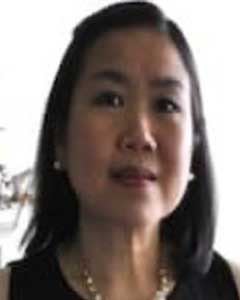Toronto-Ontario’s chief coroner, Dr. Andrew McCallum, said his office has been “making good progress” in helping to identify missing children linked to the Indian residential school system.
McCallum said his office has sifted through about 250,000 death records dating back to the 19th century and is now undertaking a “detailed review” of about 5,000 cases.
McCallum spoke at “The Meeting Place: Truth and Reconciliation,” a three-day conference organized in Toronto by Council Fire First Native Cultural Centre and supported by the Truth and Reconciliation Commission of Canada (TRC).
McCallum has told The Canadian Press that the Office of the Chief Coroner has found about 120 possible cases of previously unidentified deaths among aboriginal children and youth who may have attended residential schools.
The TRC has requested the coroner’s office to help identify the “hundreds, if not thousands” of indigenous children who went to residential schools and never made it back home. Justice Murray Sinclair, chair of the TRC, has said that many parents who lost their children to these schools were never told of the deaths.
“We hope to find answers to their tragic deaths,” McCallum told the conference, adding that while this would bring “little solace” to families, this was nonetheless “a purposeful part of the journey” toward healing.
From the late 19th century to the mid-20th century, about 150,000 aboriginal children were removed from their homes and placed in federally funded, church-run residential schools as part of the Canadian government’s program of forced assimilation. The Anglican Church of Canada operated 35 of these schools.
At the conference, McCallum also offered a gift of a small wooden turtle in a gesture of reconciliation and said his office has been “profoundly touched” by the case of the missing children and the stories of residential school survivors.
About 300 people participated in the conference held at the Sheraton Centre, including school survivors, church and government representatives, members of academia and the general public.
Meanwhile, Harsh Zaran, an immigrant to Canada, has urged dialogue between aboriginal people and immigrants, many of whom are unaware not just of the residential schools but of native history in general. New immigrants need to be involved in the truth and reconciliation process because they are also settlers, said Zaran, who came to Canada from India 15 years ago. While they may not have had a hand in the residential schools system, they are “not innocent bystanders,” because they have “benefited from the colonization of Canada.”
Zaran facilitated a discussion entitled “New Immigrants, Multiculturalism and Reconciliation: Some Decolonizing Approaches,” as part of the workshops offered at the conference. A graduate of the University of Toronto’s Munk School of Global Affairs, Zaran has conducted research on reconciliation in the Canadian context, with a special focus on the involvement of non-white immigrant Canadians in the TRC process.
He said that when immigrants first come to Canada, they are offered the dominant culture narrative in which aboriginal people are largely missing from the picture, or if they are at all mentioned, they are diminished.
He cited a study guide given to immigrants in which it states that, “aboriginal people are believed to have migrated from Asia many thousands of years ago.” The statement makes it appear that aboriginal people are “just another group of settlers who just happened to be here before the Europeans,” and directly contradicts the indigenous people’s position that their ancestors have been here since time immemorial, said Zaran.
The guide, which is distributed to immigrants applying for citizenship, also does not mention the Indian Act, aboriginal rights and treaties, and governance bodies, including the Assembly of First Nations, he noted. “It makes it appear as if aboriginal people are just another ethnic group,” he said.
While the guide mentions the history of residential schools, it does not speak of how many were affected and what the consequences of assimilation policies have been, Zaran said.
He noted that many immigrants experience “a pressure to integrate,” and often this has meant adopting the prejudices of the dominant white culture. Many immigrants themselves come from countries that have been colonized and this can be a common ground for understanding and expressing solidarity with aboriginal people, he added.





